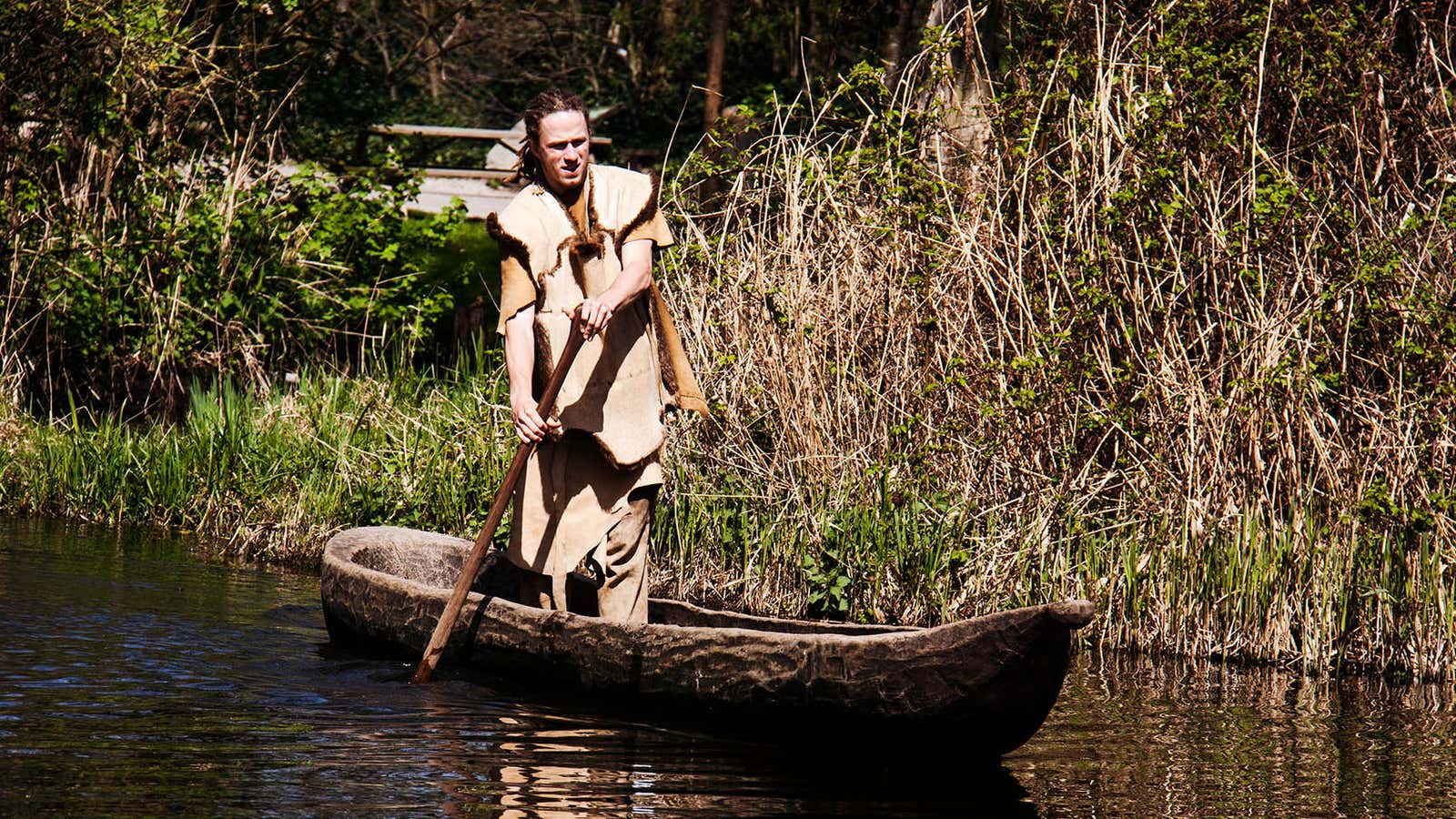If you step back in time, then all Europeans are immigrants. Their ancestors left Africa some thousands of years ago and made their way to Europe in many distinct waves of settlers. The proof lies in the term used to describe white Europeans: Caucasians—named after the Caucasus mountain range that lies between the Caspian Sea and Black Sea, the region that connects Europe to Asia and Africa.
When geneticists look at the DNA of modern Europeans, they found it to be primarily a mixture of three tribes. First came the hunter-gatherers before the Ice Age 40,000 years ago. Then came farmers from the Middle East about 7,000 years ago. And, finally, about 5,000 years ago came herders called the Yamnaya from the Steppe region in present-day Ukraine and Russia.
And, yet, there might be a fourth. The Yamnaya was often suspected to be a mixture of two distinct tribes. According to a new study published in Nature Communications, DNA recovered from two hunter-gatherers that lived between 13,000 and 8,000 years ago shows that indeed to be the case.
The Yamnaya population was formed from the mixing of a hunter-gatherer tribe that inhabited Europe before farming came along and another tribe that came from the Caucasus hunters. The researchers believe that the mixing happened about 10,000 years ago when the end of another Ice Age allowed humans to move larger distances.
However, while geneticists define modern Europeans to be “primarily” made up of these four tribes, they leave out chunks of DNA which belong to many other populations. In fact, a computer simulation of genetic data from different populations reveals that all humans today evolved from every successful reproducing human from about 5,000 years ago.
In that sense, as Daniel Zadik, a geneticist at the University of Leicester, puts it: ”Yes, we all are Vikings… and Romans, Huns, and Slavs, and we are also all Africans, Asians, and Native Americans.”




